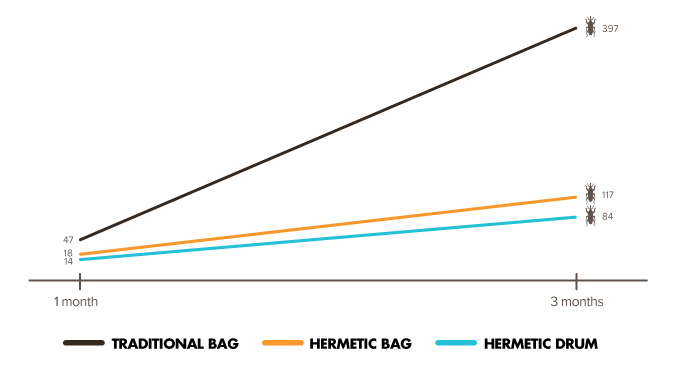
In the eastern part of Indonesia, weevil infestation accounts for a large portion of post-harvest grain losses. The insects are especially harmful for the country’s indigenous crop, sorghum, due to the warm and humid conditions in which this crop thrives.
Most farmers store sorghum for up to 12 months before consumption, shipping or selling, during which time it is susceptible to infestation. According to one expert, up to 70% of sorghum stored in the traditional manner is damaged by weevils during this time.
Given the extensive research available about the effectiveness of hermetic storage, we tested two simple hermetic methods for sorghum storage, alongside the commonly used traditional method. We stored 25kg of newly harvested and dried sorghum in each of three different containers:
- A traditional woven plastic sack (current method);
- A hermetic plastic bag placed inside the traditional woven plastic sack; and
- A hermetically sealed plastic drum.
All three were kept in the same location, a lumbung or traditional storage house, in Larantuka, East Flores - Indonesia’s top sorghum producing region.

Over three months, we counted the number of weevils, either dead or alive, in each container. We found that sorghum stored in both the hermetic bag and the hermetically sealed plastic drum presented on average only one third the number of weevils in comparison to the traditional bag.
However, we were intrigued by the presence of live weevils in both of the seemingly airtight containers. So, we are conducting a second phase of this experiment. We hypothesise that should we restrict oxygen from the containers for a full six-month period without opening them, we will not only see a reduction in the number of weevils, but none will be left alive. Stay tuned for the second phase result.


